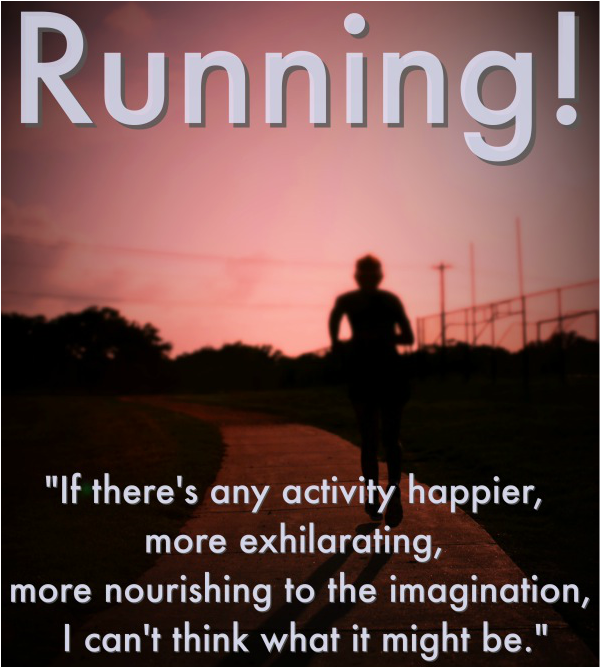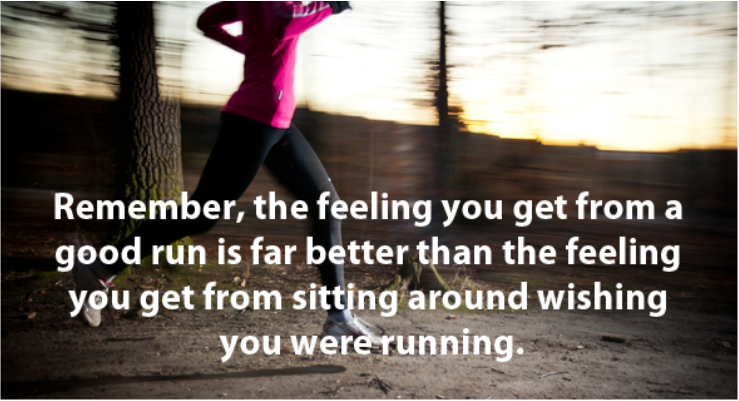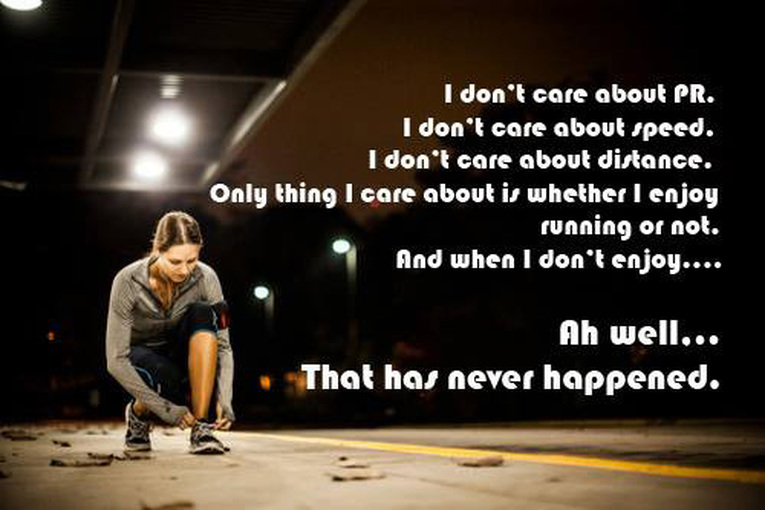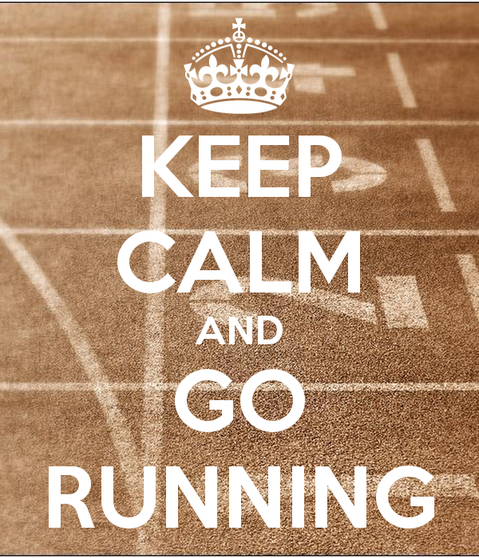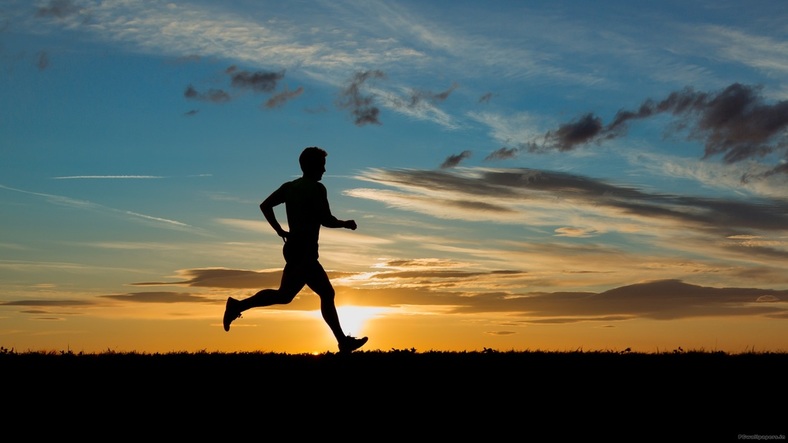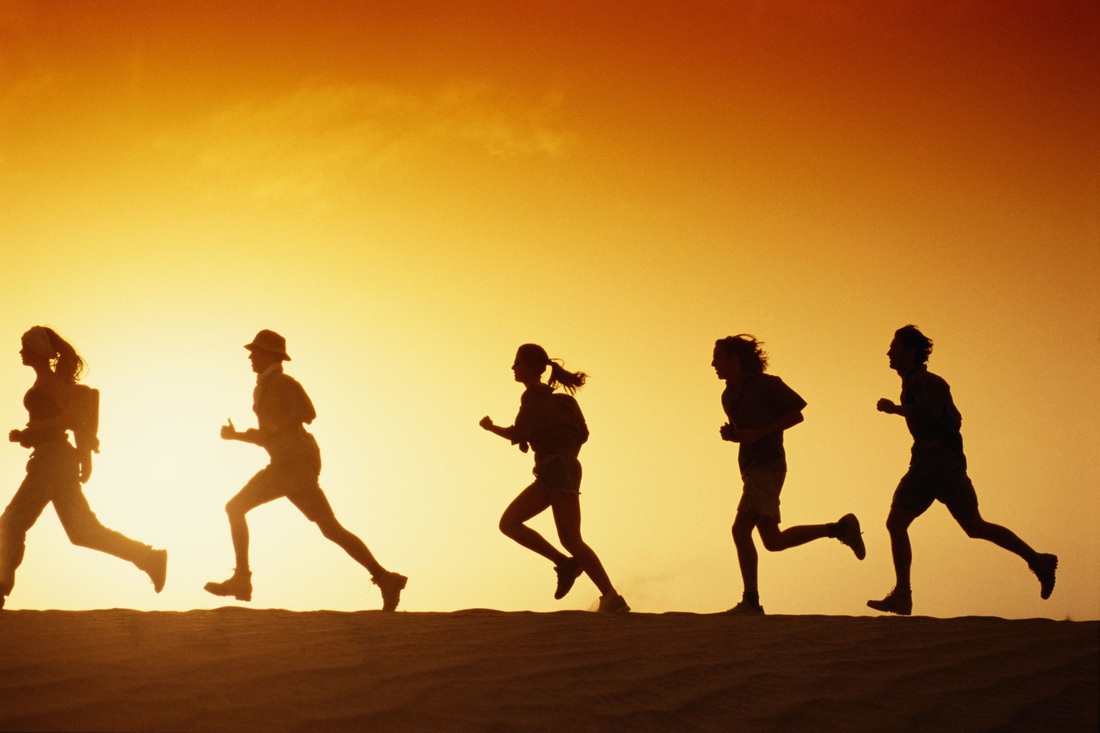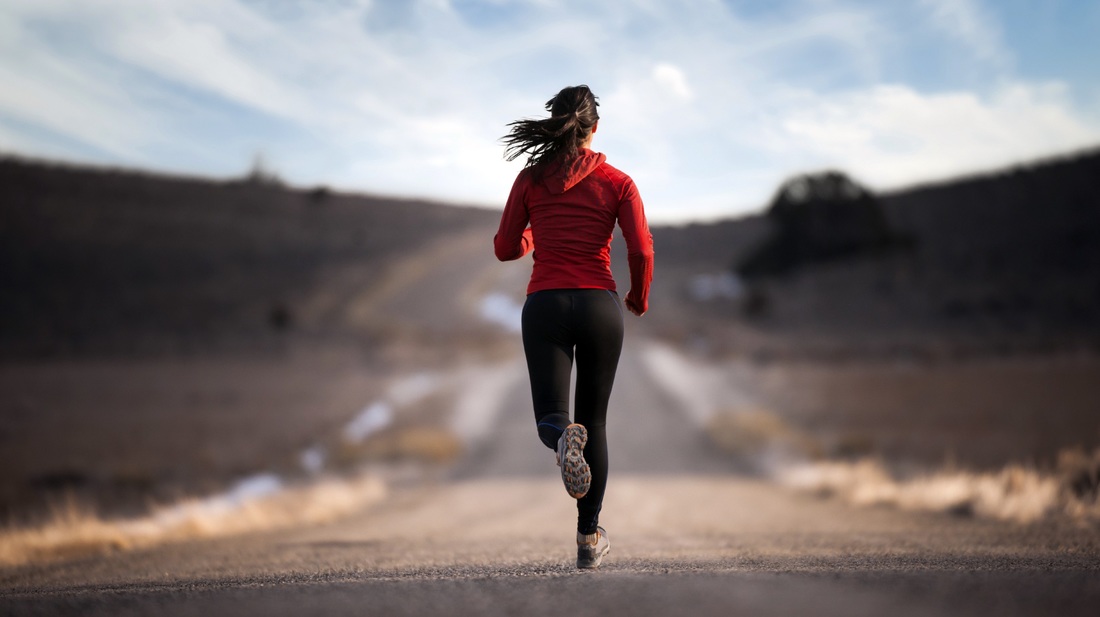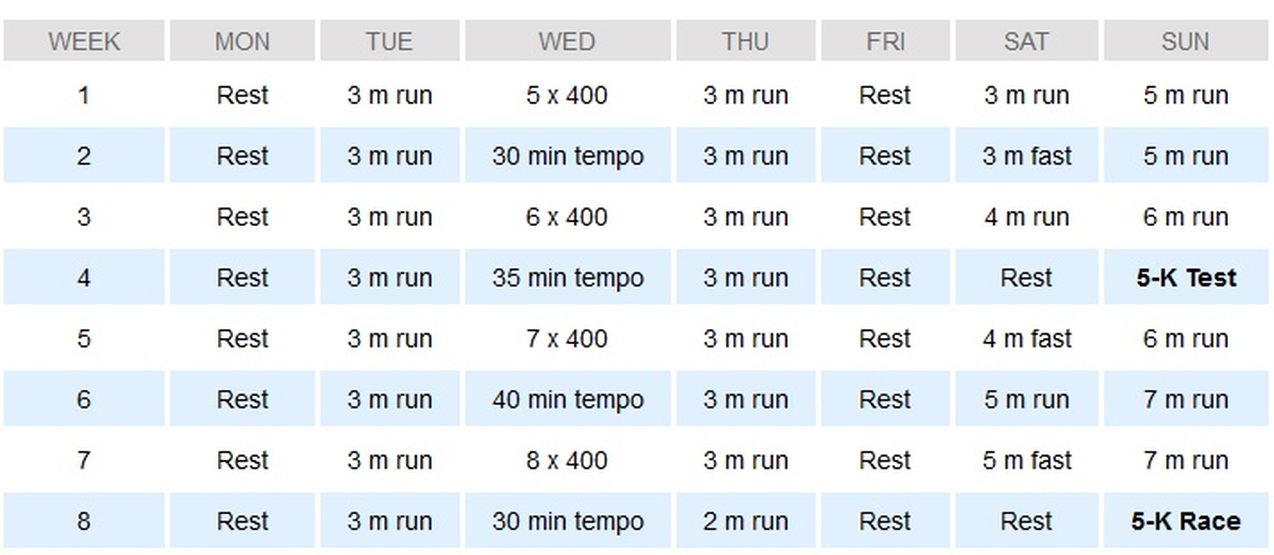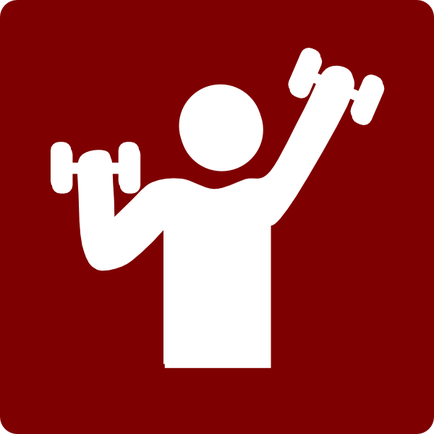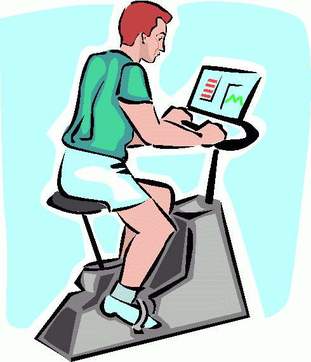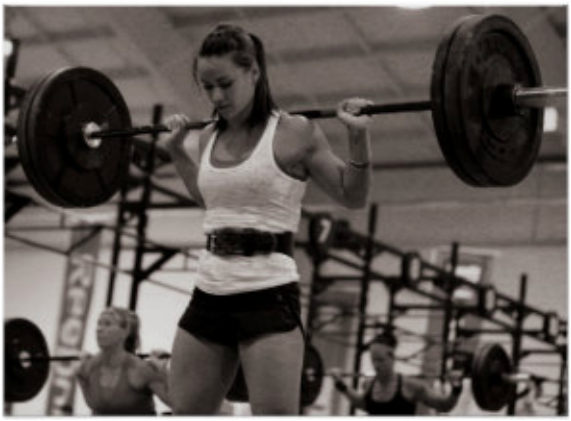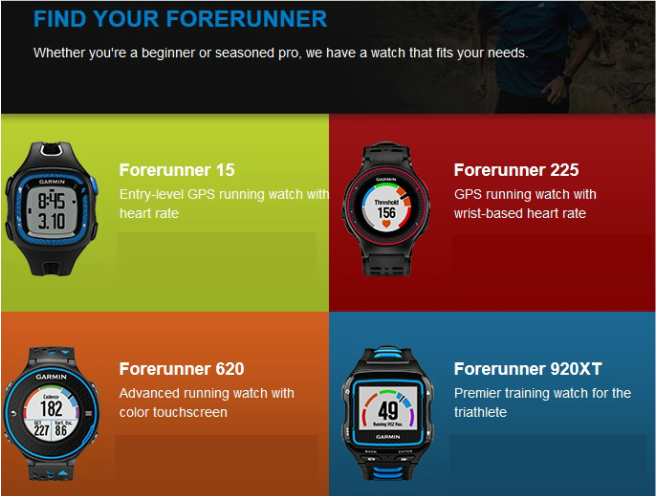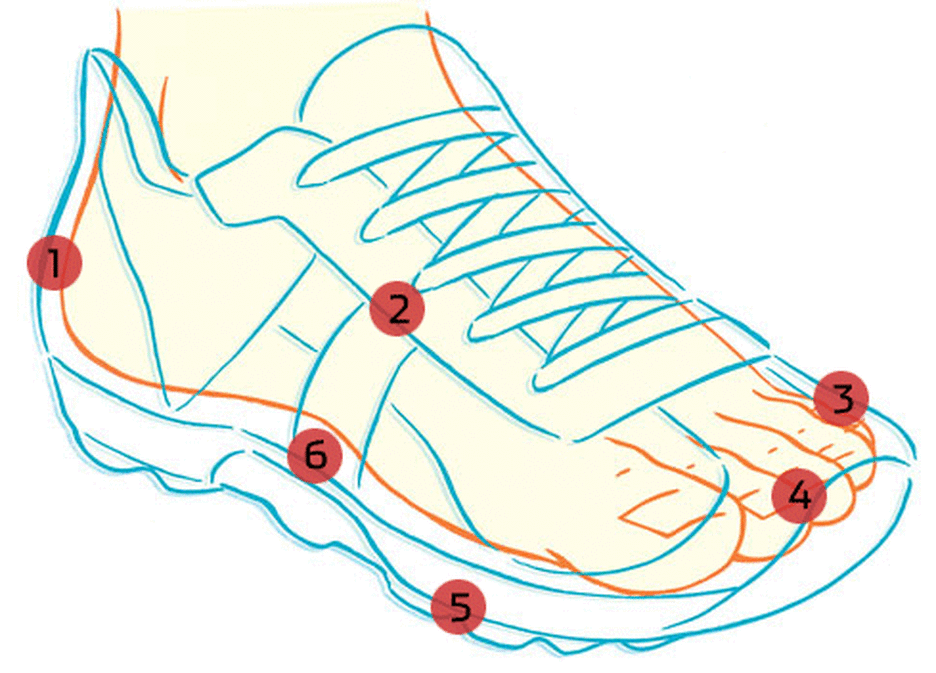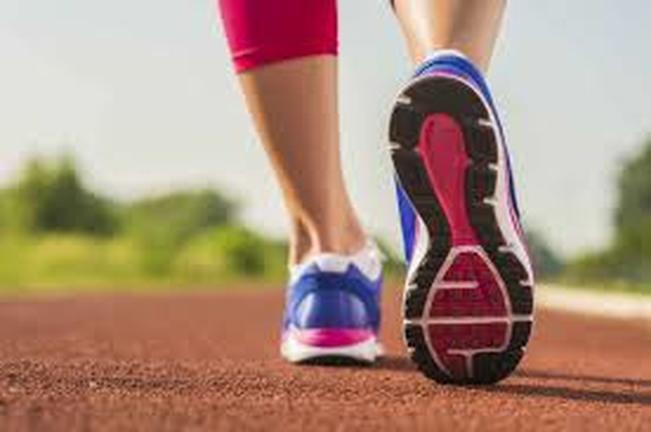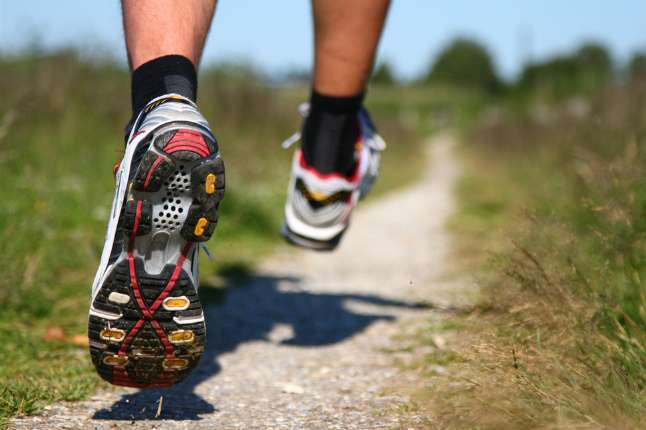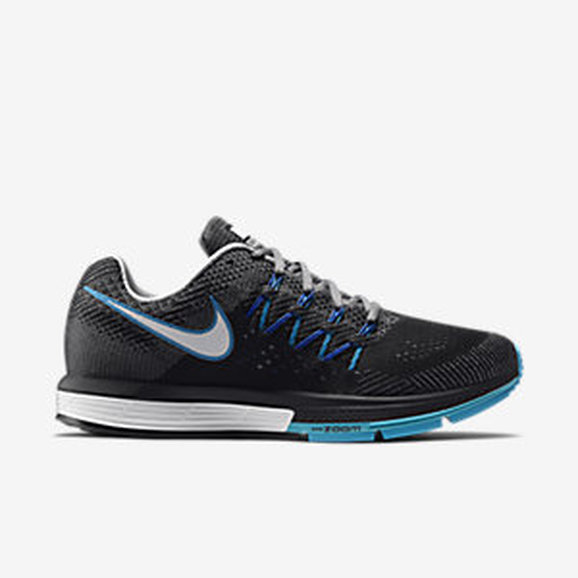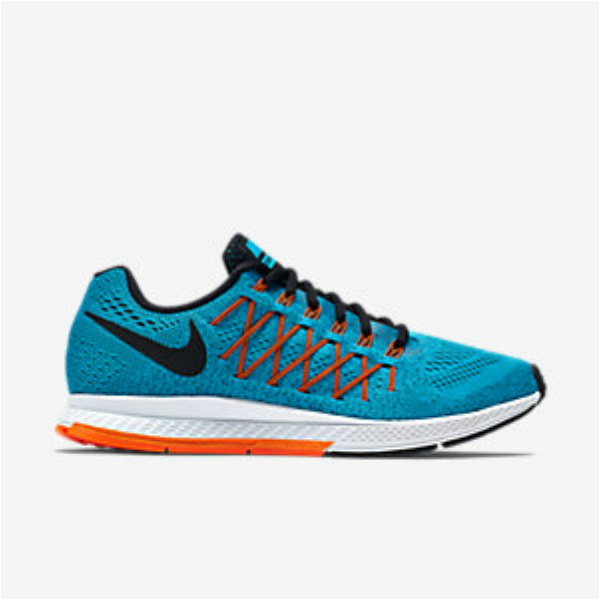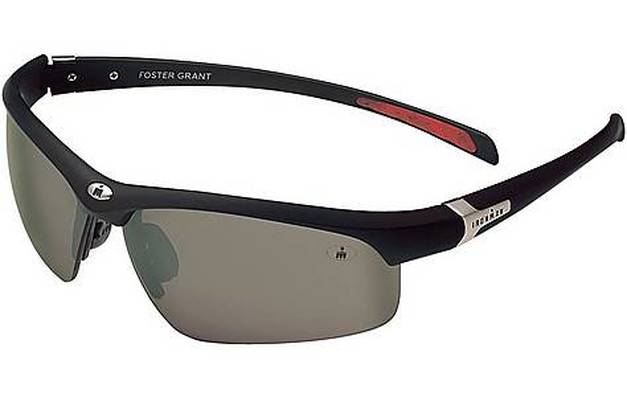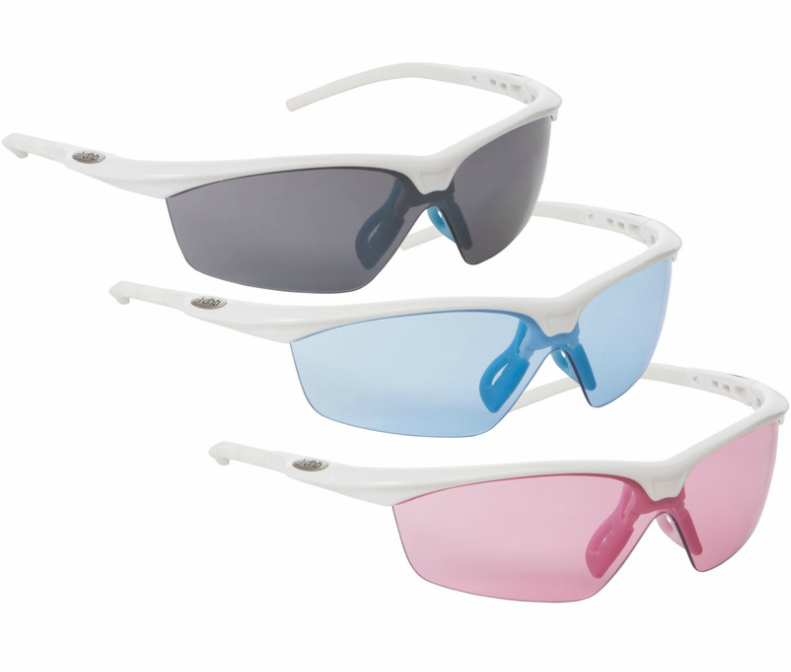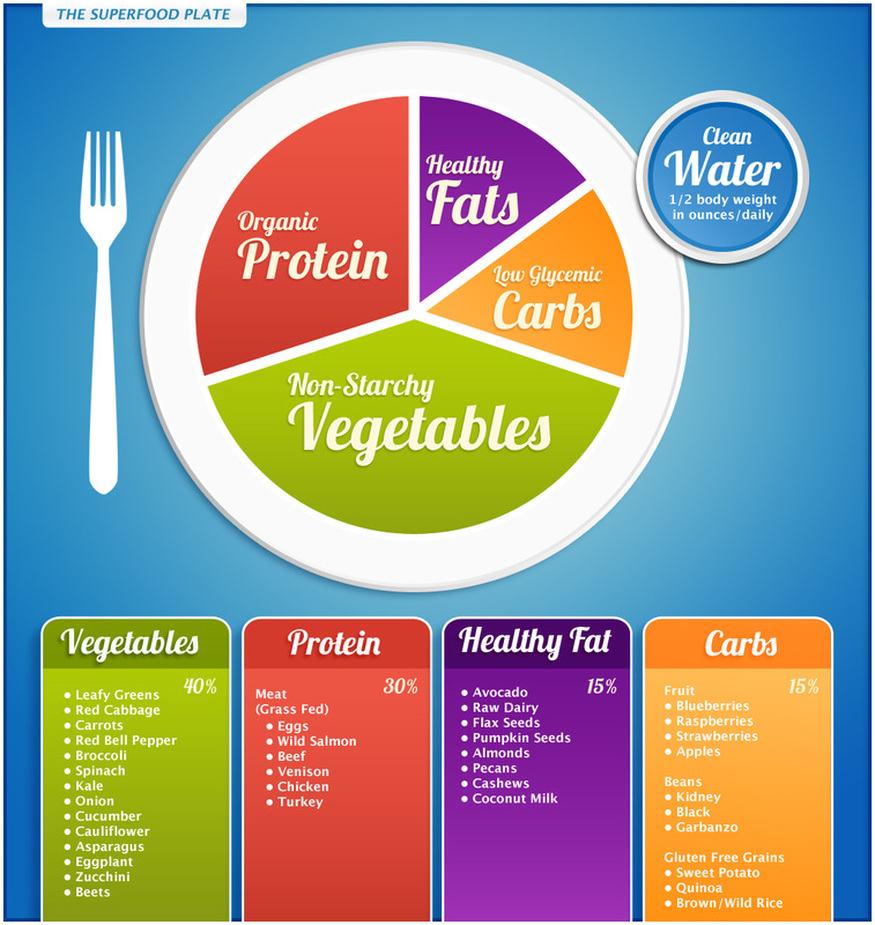Below are Tips for all aspects of running from shoes to food and everything in between.
Beginners Running
|
|
Starting to Run
Couch to 5K
Some things explained
Lactate Threshold To understand lactate threshold, we first need to define the term lactate. Lactate is a product of glycosis (the conversion of carbohydrates into glycogen stored in the body), It's a natural by-product of the body produced by muscle contraction. As athletes exercise at a higher intensity, lactate production increases. Lactate is absorbed by the muscles during exercise. This means lactate threshold is the maximum steady-state effort a runner can maintain without lactate continually increasing. When you're running at a pace within your lactate threshold, you can maintain a high-end aerobic effort that feels comfortably-hard, If you exceed your lactate threshold, your workout becomes more anaerobic and running becomes more difficult. Why you should care: If you have a higher lactate threshold, you can run longer at a faster pace. Simply stated: Lactate threshold is the speed at which lactate accumulates in the muscles and blood. If the amount of lactate produced exceeds the amount your body can absorb, that's when you start to experience muscle fatigue, and you'll slow down. If you have a higher lactate threshold, you'll be able to run faster and farther. Aerobic Capacity Aerobic capacity describes the ability of the aerobic systems in your body to produce energy to be used by the muscles during exercise. The best synonym for aerobic capacity is endurance, It's a measure of the body's ability to produce energy for muscle contractions for a longer time. Why you should care: As you build your aerobic capacity, you're able to run faster, harder and longer. Simply stated: Aerobic capacity is your body's ability to produce energy to be used during exercise or running. VO2 Max While this may look like a complex chemical equation, VO2 max is the maximum volume of oxygen the muscles can consume per minute.This means the higher the number (your VO2 max) the faster the rate in which oxygen can be used, and the faster you can run. Why you should care: A higher level of VO2 max leads to better performance, There's more oxygen available to the body to fuel the muscles, so endurance increases and speed can increase as well. Simply stated: The more oxygen that's available to your muscles, the better you'll perform. |
Intermediate Running |
|
Running Tips
5-K Training: Intermediate
How to Improve Your 5-K Times
IF YOU HAVE RUN A NUMBER OF RACES AT THE 5-K DISTANCE, you probably are not going to be content to merely finish your 5-K race. You'd like to finish it with grace, in style and maybe improve your time (known as setting a Personal Record, or PR). The above training schedule will take you to PR Territory. This intermediate Program is one step up from the novice program, but not quite as difficult as the advanced program. To set a PR, you need to improve your endurance and your speed. You can do this by (1) running more miles, (2) running faster, or (3) some combination of both. In order to achieve full benefit from this program, you probably need to have been running 3-4 days a week for the last year or two and averaging 15-20 miles weekly, It helps if you have an understanding of the concepts of speed work. Here is the type of training you need to do, if you want to improve your 5-K time. Run: When the schedule says "run," that suggests that you run at an easy pace. How fast is easy? You need to define your own comfort level. Don't worry about how fast you run; just cover the distance suggested--or approximately the distance. Ideally, you should be able to run at a pace that allows you to converse with a training partner without getting too much out of breath. Fast: For several of the Saturday runs, I suggest that you run "fast." How fast is "fast?" Again, that depends on your comfort level. Go somewhat faster than you would on a "run" day. If you are doing this workout right, you probably do not want to converse with your training partner, assuming you have one. It's okay now to get out of breath. Long Runs: Once a week, go for a long run. Run 5 to 7 miles at a comfortable pace, not worrying about speed or distance. You should be able to carry on a conversation while you run; if not, you're going too fast. Don't be afraid to stop to walk, or stop to drink. This should be an enjoyable workout, not one during which you punish yourself. Interval Training: To improve speed, you sometimes need to train at a pace faster than your race pace for the 5-K, about the pace you would run in a 1500 meter or mile race. Run 400 meters hard, then recover by jogging and/or walking 400 meters. Before starting this workout, warm-up by jogging a mile or two, stretching, and doing a few sprints of 100 meters. Cool down afterwards with a short jog. Tempo Runs: This is a continuous run with an easy beginning, a buildup in the middle to near 10-K race pace, then ease back and cruise to the finish. A typical tempo run would begin with 5-10 minutes easy running, continue with 10-15 faster running, and finish with 5-10 minutes cooling down. You can't figure out your pace on a watch doing this workout; you need to listen to your body. Tempo runs are very useful for developing anaerobic threshold, essential for fast 5-K racing. Rest: You can't train hard unless you are well-rested. The schedule includes two designated days for rest: Mondays and Fridays. The easy 3-mile runs scheduled for Tuesdays and Thursdays are also to help you rest for hard workouts on other days. The final week before the 5-K also is a rest week. Taper your training so you can be ready for a peak performance on the weekend. Stretch & Strengthen: An important addendum to any training program is stretching. Don't overlook it--particularly on days when you plan to run fast. Strength training is important too: push-ups, pull-ups, use of free weights or working out with various machines at a Health Club. Runners generally benefit if they combine light weights with a high number of repetitions, rather than pumping very heavy iron. Tuesdays and Thursdays would be good days to combine stretching and strengthening with your easy run, however, you can schedule these workouts on any day that is convenient for your business and personal schedule. Racing: Some racing is useful in helping you to peak. Consider doing some other races at 5-K to 10-K distances to test your fitness. The following schedule includes a test 5-K race halfway through the program. You could race more frequently (once every two weeks), but too much racing is not a good idea. The schedule below is only a guide. If you want to do long runs on Saturday rather than Sunday, simply flip-flop the days. If you have an important appointment on a day when you have a hard workout planned, do a similar switch with a rest day. Feel free to make minor modifications to suit your work and family schedule. It's less important what you do in any one workout than what you do over the full eight weeks leading up to your 5-K. Below is an 8 week plan to improve your 5K time. Strength Train to Improve Your Running
Running Gadgets |
GARMIN gps running Watches
|
Garmin Forerunner 225 features-
|
Running Shoes
Choosing a Shoe
There’s no single 'best shoe' – everyone has different needs. All sorts of things - your biomechanics, your weight, the surfaces you run on, and obviously, the shape of your feet - mean that one person's ideal shoe can be terrible for another person.
We divide our shoes into three main categories (stability, performance, neutral and minimalist):
Stability
Recommended for runners who are mild tomoderate overpronators and who generally have low to normal arches. These runners tend to need a shoe with a combination of good support and midsole cushioning.
Performance
Recommended either for racing or, ifyou’re biomechanically efficient, for training. They have varying degrees ofsupport and cushioning, but at 250-300g, they’re generally lighter and narrower than other running shoes.
Neutral
Recommended for runners who need maximummidsole cushioning and minimum medial support. These shoes are best for biomechanically efficient runners (with minimum pronation) and midfoot orforefoot strikers with high or normal arches.
Minimalist
Recommended for biomechanically efficient runners who want maximum responsiveness and a stripped-down shoe while retaining an element of cushioning. These are seen as the mid point between neutral cushioned and performance shoes
The first step in finding your basic shoe needs is to try our 'Wet Test', below or, preferably, to visit a biomechanics expert or experienced shoe retailer.
The Wet Test works on the basis that the shape of your wet footprint on a dry floor or piece of paper roughly correlates with the amount of stability you might need in your shoe. It will show you what features you should look for and equip you with the basic knowledge you need to make the most of your search.
We divide our shoes into three main categories (stability, performance, neutral and minimalist):
Stability
Recommended for runners who are mild tomoderate overpronators and who generally have low to normal arches. These runners tend to need a shoe with a combination of good support and midsole cushioning.
Performance
Recommended either for racing or, ifyou’re biomechanically efficient, for training. They have varying degrees ofsupport and cushioning, but at 250-300g, they’re generally lighter and narrower than other running shoes.
Neutral
Recommended for runners who need maximummidsole cushioning and minimum medial support. These shoes are best for biomechanically efficient runners (with minimum pronation) and midfoot orforefoot strikers with high or normal arches.
Minimalist
Recommended for biomechanically efficient runners who want maximum responsiveness and a stripped-down shoe while retaining an element of cushioning. These are seen as the mid point between neutral cushioned and performance shoes
The first step in finding your basic shoe needs is to try our 'Wet Test', below or, preferably, to visit a biomechanics expert or experienced shoe retailer.
The Wet Test works on the basis that the shape of your wet footprint on a dry floor or piece of paper roughly correlates with the amount of stability you might need in your shoe. It will show you what features you should look for and equip you with the basic knowledge you need to make the most of your search.
|
The Normal Foot
Normal feet have a normal-sized arch and will leave a wet footprint that has a flare, but shows the forefoot and heel connected by a broad band. A normal foot lands on the outside of the heel and rolls inwards slightly to absorb shock. It’s the foot of a runner who is biomechanically efficient and therefore doesn’t need a motion control shoe. Best shoes: Stability shoes with moderate control features. The Flat Foot This has a low arch and leaves a print which looks like the whole sole of the foot. It usually indicates an overpronated foot – one that strikes on the outside of the heel and rolls inwards (pronates) excessively. Over time, this can cause many different types of overuse injuries. Best shoes: Motion control shoes, or high stability shoes with firm midsoles and control features that reduce the degree of pronation. Stay away from highly cushioned, highly curved shoes, which lack stability features. The High-Arched Foot This leaves a print showing a very narrow band or no band at all between the forefoot and the heel. A curved, highly arched foot is generally supinated or underpronated. Because it doesn’t pronate enough, it’s not usually an effective shock absorber. Best shoes: Cushioned (or 'neutral') shoes with plenty of flexibility to encourage foot motion. Stay away from motion control or stability shoes, which reduce foot mobility. |
Fitting
|
Finding the best-fitting shoe among the many choices at your local running store isn't always easy. To ensure you walk out with happy feet, you need to make sure the shoe fits properly from heel to toe. We asked two prominent specialty-running-store owners—each of whom has fitted thousands of runners—to share some of their secrets. Knowing what to look for will give you a better idea how your next pair should feel on your feet.
1. Heel Your heel should fit snug, but not tight, says Carl Brandt. "Laced up (but not tied), you should be able to slide your feet out." Lacing your shoes up through the final eyelet minimizes slippage. There will be some heel movement, but it shouldn't be uncomfortable. Any irritation you feel in the store, adds Brandt, will be amplified once you hit the road. 2. Instep A shoe's upper should feel snug and secure around your instep, explains Brandt. "When people tell me they feel pressure and tightness, they need more space." If an otherwise great shoe has hot spots or pressure under the laces, try lacing it up a different way (check out Runnersworld.com/lacing for alternative lacing techniques) before moving on to the next shoe. 3. Width Your foot should be able to move side-to-side in the shoe's forefoot without crossing over the edge of the insole, says James. You should be able to pinch a quarter inch of upper material along the widest part of your foot. If the shoe is too narrow, you'll feel the base of your little toe sitting on the edge of the shoe last. 4. Length Feet swell and lengthen over a run, so make sure there's a thumb's width of space between your longest toe (which isn't always the big toe) and the end of a shoe. A friend or shoe fitter can measure this while you stand with your shoes laced up. Your toes should also wiggle freely up and down, explains Super Jock 'n Jill running store owner Chet James. "Wiggle room protects against front-of-the-foot issues." 5. Flex Check the flex point before you put on the shoe, suggests Carl Brandt, owner of San Diego's Movin Shoes running stores. You can do this by holding the heel and pressing the tip of the shoe into the floor. The shoe should bend and crease along the same line your foot flexes. An improperly aligned flex point can lead to arch pain or plantar fasciitis, while a lack of flexibility leads to Achilles-tendon or calf strain. 6. Feel Knowing your arch type or running mechanics isn't the whole story. You still need to pinpoint shoes that match your foot's contours and movements. You can't get a good feel by just standing, says James. So take your shoes for a quick jog, either on a store's treadmill, on the sidewalk, or down a hallway. A natural-feeling support under the arch works for most people, James says. "Back off the amount of support if you feel your arch cramping." Your shoe should complement and support your stride, not try to alter it. |
|
Avoid Common Shoe-Buying Mistakes
Specialty running store staffers see runners making the same mistakes again and again when they come in to buy shoes. But not you, not anymore, thanks to this advice from five prominent store owners/managers. Mistake #1: Buying for looks. Some runners are too concerned with fashion, and we try and steer people away from that. Often, when they get a shoe that looks cool, they end up coming back in a few months and saying, 'This shoe hurts me. I had a problem with it.' When you buy, think feel and fit, not fashion. Mistake #2: Not asking for deals. When you're ready to pay, ask if there are any discounts available for running club members. Most specialty stores offer discounts from 10 to 20 percent; we offer 10 percent to our local track club. It costs $20 to join it, so if you buy two pairs of shoes, your track membership is paid for. Mistake #3: Buying shoes that are too small. Tight-fitting shoes lead to blisters and black toenails and that kind of thing. Women in particular are used to wearing their shoes close-fitting, as they're often more self-conscious about the size of their feet. We like to say, 'Play the piano with your toes,' meaning the fit should be roomy enough in the forefoot—about half an inch—but not sloppy."—Mike Johnson, Road Runner Sports, San Diego Mistake #4: Shopping at the wrong time of day. "A lot of times people come in the morning and say, 'This is the shoe I need.' Then they'll come back the next day and say, 'I wore them at 5 p.m. and they were too small.' Your feet start swelling in the morning and they don't stop until about 4 p.m. That's as big as they're going to get, so always buy your shoes in the evening."—Tish Borgen, Running Room, Minneapolis Mistake #5: Assuming your size. "People assume that a size is a size—that an 8 in a Nike will be the same as an 8 in a New Balance. But sizes differ because of different lasts (foot forms), the different shape of the upper, and the way the shoe is stitched together. Have your feet measured every time you buy, and always try the shoes on for fit. |
Types
Brands
|
Nike Air Zoom Vomero 10
ULTRA-SOFT RIDE. ADAPTIVE SUPPORT. The Nike Air Zoom Vomero 10 Men's Running Shoe delivers lightweight, breathable comfort and responsive cushioning with a Flymesh upper and Nike Zoom units in the heel and forefoot. Dynamic Fit technology uses Flywire cables that integrate with the laces to provide lockdown and stability through foot strike. Responsive Cushioning Nike Zoom units in the heel and forefoot provide ultra-responsive, low-profile cushioning at heel-strike and toe-off for comfort over the longest distances. They are 2mm thinner than their predecessors, giving you more impact protection from the dual-density foam midsole. Breathability The lightweight Flymesh upper enhances breathability to help you stay cool in hot conditions. Supportive Fit Dynamic Fit technology works with Flywire technology integrated with the laces, wrapping the midfoot and arch for an adaptive, supportive fit that moves with you as you run. More Benefits
|
|
Nike Air Zoom Pegasus 32
EVERYDAY FAST The Nike Air Zoom Pegasus 32 Print Men's Running Shoe delivers highly responsive cushioning and lightweight support to help you find your fastest run. Responsive Cushioning A Nike Zoom Air unit in the heel combines pressurised Nike Air and internal fibres to create cushioning that springs back fast—so you move fast. Breathable Support The engineered mesh upper provides ventilation and support where you need it most. Flywire cables wrap the midfoot and arch for added support and a secure, comfortable fit. Smooth Transitions A crash rail underfoot acts as a cushioning device upon impact to help smooth out your footstrike. More Benefits
|
Running Gear
Sun Glasses
|
When purchasing sunglasses, one way to be sure you’re getting the protection you want is to look to see if the glasses have been approved by the American National Standards Institute (ANSI)—if they have, this should be noted somewhere on the product box or on material enclosed with the glasses. If you’re unsure if they provide adequate UV protection, Nickel suggests taking the glasses to your eye doctor and having the lenses tested.
Another consideration when picking out sunglasses is how well they cover your eyes, as UV rays can reach your eyes from all angles. For the best protection, select a model that wraps around to the sides of your face, a feature that many running sunglasses have, but which more fashion-oriented sunglasses often lack. Once you’ve zeroed in on the models that offer the protection you seek, then Nickel says the ultimate decision on which to buy should come down to comfort. There’s a dizzying array of sunglasses out there: those for wider faces, those for the slim; metal frames and plastic; a full spectrum of lens tints and colors, and the list goes on. The variety of options can be boggling, so here are a few pointers: |
|
Fit: This is a very personal and individual issue. One thing to take into consideration is that some manufacturers make different sizes of the same sunglasses, or offer a similar model that is sized differently. Polarized Lenses: "I don’t think you could ever go wrong with a polarized lens as long as it has UV protection," says Nickel. The polarization will cut down on glare, and is particularly useful for anyone who will be near water, sand, or snow. Lens Tints: Every model of sunglasses seems to boast a different color lens, with many models now coming with several interchangeable lenses. Don’t worry about using a lighter, or even a clear, lens as long as it offers UV protection. Despite popular belief, darker does not necessarily mean better. Some of the lighter colored lenses will actually improve your vision by providing greater contrast, while offering the same valuable UV protection as a darker lens. What color and tint you need depends on when and where you plan to wear your sunglasses the most. An extremely dark lens will be perfect for someone who likes to run on the beach, but would be a poor choice for someone who does a lot of driving in the morning or evening. |
title 1
Diet
What to eat

Eat seeds or foods made from seeds
What makes seeds so special? Seeds—including whole grains, many beans, and even tree nuts—contain the crucial mix of nutrients necessary to grow a new plant, which means they are packed with health-boosting compounds. In addition to traditional nutrients like protein and essential fats, seeds contain bioactive compounds, such as phenolic compounds and ferulic acid, which act as antioxidants.
Eating a diet with ample plant seeds has been shown to improve health and help maintain a healthier body weight. People who eat whole grains and beans have a lower risk for developing type 2 diabetes and certain cancers, and they tend to have lower cholesterol levels than people who don't eat nuts and seeds.
Eat five different colored fruits and vegetables daily
You already know that eating fruits and veggies supplies your body with vitamins, minerals, and the carbs it needs to fuel your running. Fruits and vegetables also fill you up with few calories, helping you maintain your weight. But to get the most from your produce, you need to think in terms of color—yellow, orange, red, green, blue, purple, and every shade in between. There are 400-plus pigments that light up the produce aisle, and each offers unique health benefits.
The rich red in pomegranate comes from anthocyanins, the deep red in tomatoes comes from lycopene, and the bright orange in sweet potatoes comes from beta-carotene. These and other pigments have been shown to lower your risk of cancer, heart disease, and Alzheimer's, while also improving your memory. And since most pigments act as antioxidants, they can help reduce inflammation caused by disease or heavy exercise. But new studies suggest that the pigments in produce need to interact with other color compounds in fruits or vegetables to produce their beneficial effects, which is why it's important to eat a wide variety of colors every day. The results of these studies also explain why taking a single pigment, such as beta-carotene in supplement form, doesn't lead to the same health improvements as eating the whole foods and may even increase your risk for some diseases.
What makes seeds so special? Seeds—including whole grains, many beans, and even tree nuts—contain the crucial mix of nutrients necessary to grow a new plant, which means they are packed with health-boosting compounds. In addition to traditional nutrients like protein and essential fats, seeds contain bioactive compounds, such as phenolic compounds and ferulic acid, which act as antioxidants.
Eating a diet with ample plant seeds has been shown to improve health and help maintain a healthier body weight. People who eat whole grains and beans have a lower risk for developing type 2 diabetes and certain cancers, and they tend to have lower cholesterol levels than people who don't eat nuts and seeds.
Eat five different colored fruits and vegetables daily
You already know that eating fruits and veggies supplies your body with vitamins, minerals, and the carbs it needs to fuel your running. Fruits and vegetables also fill you up with few calories, helping you maintain your weight. But to get the most from your produce, you need to think in terms of color—yellow, orange, red, green, blue, purple, and every shade in between. There are 400-plus pigments that light up the produce aisle, and each offers unique health benefits.
The rich red in pomegranate comes from anthocyanins, the deep red in tomatoes comes from lycopene, and the bright orange in sweet potatoes comes from beta-carotene. These and other pigments have been shown to lower your risk of cancer, heart disease, and Alzheimer's, while also improving your memory. And since most pigments act as antioxidants, they can help reduce inflammation caused by disease or heavy exercise. But new studies suggest that the pigments in produce need to interact with other color compounds in fruits or vegetables to produce their beneficial effects, which is why it's important to eat a wide variety of colors every day. The results of these studies also explain why taking a single pigment, such as beta-carotene in supplement form, doesn't lead to the same health improvements as eating the whole foods and may even increase your risk for some diseases.
|
Eat plant foods with their skins intact
Drop the peeler. From apples and black beans to red potatoes and zucchini, plants' outer skins protect them from UV light, parasites, and other invaders. As a result, those skins are bursting with a wide range of phytochemicals that also protect your health. Grape skins, for example, are high in resveratrol, and onion skins contain quercetin, both of which can help lower your risk of heart disease and colon and prostate cancer, and boost your immunity. Produce skin is also rich in resistant starches and various types of fiber. These compounds promote the growth of healthy bacteria in the intestines, improve intestinal function (relieving constipation and decreasing hemorrhoid risk), and help curb appetite and aid in weight control. Studies have shown that fiber from vegetable and fruit skins (which contain both soluble and insoluble fibers) actually blocks absorption of three to four percent of total calories consumed when eaten as part of a high-fiber diet. This is why people who follow a higher-fiber diet (over 35 grams daily) that consists of mainly fruits and vegetables tend to have lower body-fat levels and smaller waist sizes than low-fiber eaters. |
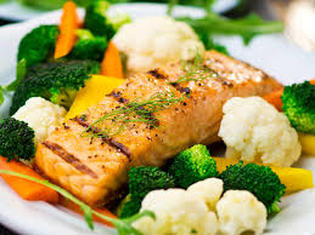
Drink milk and eat milk products that come from animals
Whether from a cow, a goat, or even a reindeer, mammal milk (as opposed to soy milk) and other dairy products, like cheese, yogurt, and kefir, should be a part of every runner's diet. Sure, milk supplies calcium, and calcium builds strong bones, which is great for your running. But animal milk offers much more.
Dairy supplies a runner's hardworking muscles with an ample amount of protein to help speed recovery. But whey protein, the specific type of protein found in dairy foods, may also help strengthen the immune system. Milk products also contain stearic acid, which is thought to improve blood-cholesterol levels. Ample research also suggests that regular dairy consumption can lower your blood pressure and your risk for heart disease. And for anyone watching his or her weight, studies have shown that dieters who include dairy in their low-calorie plans lose more fat than those who simply cut calories.
Fermented dairy products, such as yogurt, cultured milk, and kefir, contain live bacteria, which also bolster immune health. These bacteria, as well as a special fat in dairy called conjugated linoleic acid (CLA), can also help alleviate constipation, improve symptoms of certain intestinal ailments, such as inflammatory bowel disease, and reduce the occurrence of yeast infections in women. And people who are lactose intolerant may see an improvement in their symptoms when they regularly consume cultured dairy products.
Whether from a cow, a goat, or even a reindeer, mammal milk (as opposed to soy milk) and other dairy products, like cheese, yogurt, and kefir, should be a part of every runner's diet. Sure, milk supplies calcium, and calcium builds strong bones, which is great for your running. But animal milk offers much more.
Dairy supplies a runner's hardworking muscles with an ample amount of protein to help speed recovery. But whey protein, the specific type of protein found in dairy foods, may also help strengthen the immune system. Milk products also contain stearic acid, which is thought to improve blood-cholesterol levels. Ample research also suggests that regular dairy consumption can lower your blood pressure and your risk for heart disease. And for anyone watching his or her weight, studies have shown that dieters who include dairy in their low-calorie plans lose more fat than those who simply cut calories.
Fermented dairy products, such as yogurt, cultured milk, and kefir, contain live bacteria, which also bolster immune health. These bacteria, as well as a special fat in dairy called conjugated linoleic acid (CLA), can also help alleviate constipation, improve symptoms of certain intestinal ailments, such as inflammatory bowel disease, and reduce the occurrence of yeast infections in women. And people who are lactose intolerant may see an improvement in their symptoms when they regularly consume cultured dairy products.
|
Eat foods that come from cold water
Fish and other seafood provide a unique combination of nutrients important to runners. Most seafood is an excellent source of quality protein (you need about 50 percent more protein than your nonrunning friends) and also contains zinc, copper, and chromium—minerals that are often low in a runner's diet. But the omega-3 fats found in fish, particularly those from cold waters, are what make seafood such an essential part of anyone's diet. Over the past decade, researchers have unfolded a fish story of grand proportions: People who eat fish and other seafood a few times per week have a lower risk of sudden heart attack, vascular disease, and stroke. Fish intake has also been linked to lower rates of depression. And recently, low intake of fish (and omega-3 fats) has been associated with certain behavioral conditions in children, such as attention deficit hyperactivity disorder. Anthropological scientists who study "caveman" nutrition theorize that our ancestors consumed much more omega-3 fats than we currently do and that many of our modern-day ailments, such as heart disease and Alzheimer's, may stem from low omega-3 fat intake. Runners should also note that the omega-3s in fish have anti-inflammatory capabilities, giving them the potential to counter exercise-induced muscle soreness and help alleviate diseases such as psoriasis. Eat meat, poultry, or eggs from free-range or grass-fed animals By eating lean meats, poultry, and eggs, along with dairy products, runners can easily meet their increased protein needs and take in crucial minerals that can be hard to get from nonanimal sources. In particular, meats are a great source of iron and zinc, which support healthy red blood cells and a strong immune system. And these two minerals are simply better absorbed by the body when they come from meat instead of nonmeat sources. While a vegetarian lifestyle can be quite healthy, studies suggest that diets balanced with fruits, vegetables, whole grains, and lean cuts of meat, including beef and skinless poultry, help lower blood-cholesterol levels, blood pressure, and heart-disease risk. Sticking to lean meats, however, is key, so consider foods from animals raised in open pastures that graze on grasses. Compared with their stockyard-raised, corn-fed counterparts, free-range, grass-fed animals may contain more omega-3 fats and less artery-clogging saturated fats due to their healthier diets and higher activity levels. |
Resources

